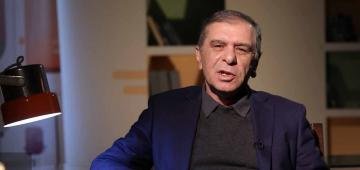 |
Grigor Artsruni
In the Pavilion: Literature and Art program, prose writer Hovhannes Yeranyan tells about Grigor Artsruni, a figure who had a huge influence in his time, but was controversial.
|
 |
Carpet weaving
The carpet was created, as Foucault defined it, as “a special kind of space: heterotopia” and a reflection of the oriental garden. Why are women the authors of these unique worlds? What are the real connections between the legends of Armenian red carpets and reality? Why is Armenian carpet weaving not in its rightful place on the world cultural map? Marina Baghdagyulyan discussed the topic with art critic Anush Hakobyan on the “Sixth Day” program.
|
 |
"Artsakh" Chamber OrchestraAfter the Armenian exodus from Artsakh in 2003, the Artsakh Chamber Orchestra, like many orchestras and ensembles, found itself in an uncertain state, with its musicians left unemployed. With the help of world-renowned musicians Hasmik Papyan and Narek Hakhnazaryan and with the financial support of the AGBU, the orchestra was reorganized in Yerevan. A new page has begun in the orchestra's life, the key goal of which is to make the name of Artsakh heard on prestigious stages around the world. |
 |
What is post-war Armenian abstract art about?At the beginning of the 20th century, between and after the two world wars, the “children” of the times of pain, shocks and destruction came - representatives of abstract art. They created a new relationship between man and art, based on intellect and concept. And what is Armenian abstract art about in the post-war period? If the images of representatives of European abstract art were accompanied by the poetic words of Jacques Prévert, then the art of Khachatur Martirosyan is Grigor Narekatsi. |
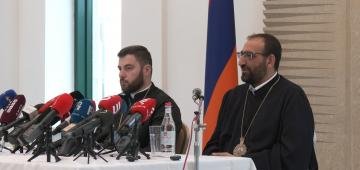 |
The removal of the Catholicos’ name is a bid to establish a separate religious direction։ Archbishop ArshakArchbishop Arshak Khachatryan believes that the removal of the Catholicos’ name during the Liturgy denies the hierarchical order, denies church authority, and one’s own affiliation. This means that you are excluding yourself from church affiliation. According to him, the Catholicos cannot leave just because some circles, including suspicious ones, whose church affiliation is highly questionable, have put forward such an agenda. The Catholicos cannot leave even if 10 bishops have made such a demand. |
 |
Red Ball
The music for the song “Red Ball” is by Vahe Hayrapetyan, accompanied by pianist Liana Torosyan.
The children, along with singer and songwriter Hasmik Baghdasaryan-Dolukhanyan, perform songs by contemporary Armenian composers, folk songs, and songs by Komitas. Hasmik Baghdasaryan-Dolukhanyan aims to popularize children’s songs by contemporary composers through children’s performances.
|
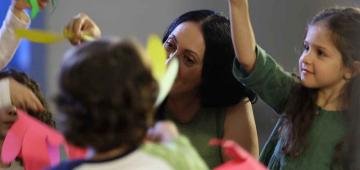 |
Day and Me
The music for the song “Day and Me” is by Argina Harutyunyan, accompanied by pianist Liana Torosyan. Puppeteer Aghasi Melkonyan, staging a small performance with the participation of children, makes the song more vivid and interesting.
The children, together with singer and songwriter Hasmik Baghdasaryan-Dolukhanyan, perform songs by contemporary Armenian composers, folk songs, and songs by Komitas. Hasmik Baghdasaryan-Dolukhanyan aims to popularize children’s songs by contemporary composers through children’s performances.
|
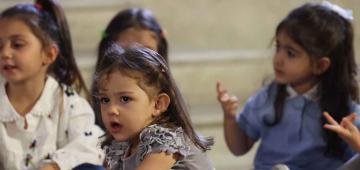 |
Five Ducks
Raffi Kavukian "Five Ducks", accompanied by pianist Liana Torosyan.
The children, along with singer and songwriter Hasmik Baghdasaryan-Dolukhanyan, perform songs by contemporary Armenian composers, folk songs, and songs by Komitas. Hasmik Baghdasaryan-Dolukhanyan aims to popularize children's songs by contemporary composers through children's performances.
|
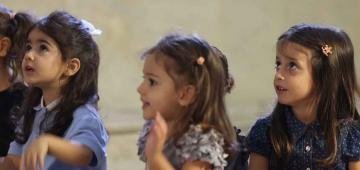 |
Zmpik zmpik
Folk song "Zmpik zmpik", accompanied by pianist Liana Torosyan.
The children, along with singer and songwriter Hasmik Baghdasaryan-Dolukhanyan, perform songs by contemporary Armenian composers, folk songs, and songs by Komitas. Hasmik Baghdasaryan-Dolukhanyan aims to popularize children's songs by contemporary composers through children's performances.
|
 |
Martyrs of the Regime, Part 3: Priests of the Armenian Church
In 1930-1936, 109 priests were repressed by the Bolshevik authorities. In total, 148 clergy were repressed in Soviet Armenia by 1938. 209 cases of violence were recorded against them, from imprisonment to torture and execution. The main accusations were anti-Soviet agitation, nationalism and counter-revolution. The false criminal cases and fabricated charges brought against the clergy were revealed years later. All the repressed were acquitted due to the lack of evidence of the crime.
Blessed names in the Armenian Church calendar, their martyrdom is commemorated every year, at the Holy Liturgy, along with 148 repressed Armenian clergy.
The Armenian Church has seen and experienced Bolshevism
|
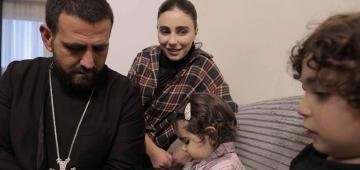 |
Father Maghakia GevorgyanFather Maghakia Gevorgyan, who has served in the Aragatsotn diocese for more than 25 years, has never seen persecution of priests or violation of their rights in the church. He has never heard from the leaders that they should be silent or tolerate injustices occurring in the church; on the contrary, they have always had opportunities to raise issues. He believes that priesthood teaches humility. |
 |
Writer, playwright, painter and film director Aghasi AyvazyanIn the Pavilion: Literature and Art program, prose writer Hovhannes Yeranyan presents the high literary and artistic merits of the story "The Price of an Ordinary Man" by writer, playwright, painter, and film director Aghasi Ayvazyan. |

